Category:
General musings
John Ferling’s Almost a Miracle: The American Victory in the War of Independence
Notice: Use of undefined constant the_post_thumbnail - assumed 'the_post_thumbnail' in /home/netscrib/public_html/civilwarcavalry/wp-content/themes/wittenberg/archive.php on line 65

I have just finished John Ferling’s excellent Almost a Miracle: The American Victory in the War of Independence. Ferling is a retired professor of history, and this book is the product of a lifetime’s work on his part. And it shows.
This is, without doubt, one of the finest books on the American Revolution ever written. It’s a military history of the Revolution meant to be the companion volume to his A Leap in the Dark: The Struggle to Create the American Republic , which is a political history of the Revolutionary War. It covers the war completely, with enough detail to give the reader a good overview of what happened and ideas of where to look for more if that’s of interest. He focused on the strengths and weaknesses of the commanders on both sides and demonstrates rather amply that the American victory in the war was, indeed, nearly a miracle.
One of the things that I really appreciated about the book was how Ferling managed to place the war in North America squarely in the context of the global geopolitical situation. Only by seeing the entire picture can one truly understand how the chain of events that brought about the unlikely American victory over the finest standing army in the world came to pass. Few books do that, and I found Ferling’s efforts to do so to be among the most useful aspects of the analysis.
The central thesis of Ferling’s book is that George Washington designed and brilliantly implemented a Fabian strategy to win the war. For those unfamiliar with the concept of a Fabian strategy, here’s a quick primer on it. Fabian strategy is an approach to military operations where one side avoids large, pitched battles in favor of smaller, harassing actions in order to break the enemy’s will to keep fighting and wear that enemy down through attrition. Generally, this type of strategy is adopted by smaller, weaker powers when combating a larger foe. In order for it to be successful, time must be on the side of user, which must be able to avoid large-scale actions. Also, Fabian strategy requires a strong degree of will from both politicians and soldiers, as frequent retreats and a lack of major victories can prove demoralizing.
Fabian strategy is named for the Roman emperor Quintus Fabius Maximus. Given the task of defeating the great Carthaginian general Hannibal in 217 BC, following crushing defeats at the Battles of Trebbia and Lake Trasimene, Fabius’ troops shadowed and harassed the Carthaginian army while avoiding a major confrontation. Knowing that Hannibal was cut off from his supply lines, Fabius instituted a scorched earth policy intended to starve Hannibal’s army into retreating. Taking advantage of shorter interior lines of communication, Fabius prevent Hannibal from resupplying his army while also inflicting several minor defeats on his army.
Ferling very convincingly argues that Washington came up with the idea of implementing and executing a Fabian strategy, and that, with only a couple of exceptions (most notably, the September 11, 1777 Battle of Brandywine, where he was soundly thrashed), Washington adhered to the strategy throughout the eight long years of the Revolutionary War. He also argues, again quite effectively, that Washington’s most able and most dependable subordinate, Maj. Gen. Nathanael Greene, did an even better job of implementing the Fabian strategy to counter the British Southern Strategy. Although Cowpens was the only battle that Greene won, his tactics inflicted such heavy losses on Cornwallis’ army that he was forced to abandon the Carolinas, make for Virginia, and adopt Yorktown as his base of operations. That, in turn, made the surrender of Cornwallis’ army and the negotiated peace a foregone conclusion.
The book is brilliant, and I recommend it to anyone with even a passing interest in the Revolutionary War.
It also got me wondering what would have happened had the Confederacy implemented a Fabian strategy from the beginning of the Civil War. There certainly would not have been three invasions of Maryland. Robert E. Lee was probably far too aggressive to execute such a passive means of waging war, so it is unlikely that it could have happened. However, it certainly makes for interesting speculation. What do you think?
Scridb filterMemorial Day 2008
Notice: Use of undefined constant the_post_thumbnail - assumed 'the_post_thumbnail' in /home/netscrib/public_html/civilwarcavalry/wp-content/themes/wittenberg/archive.php on line 65

Next week, I will have lived in Columbus for 21 years. There’s a large Victorian cemetery on the west side of town called Greenlawn Cemetery, which describes itself as “a very special park.” Until today, I had never been to Greenlawn. Since it was Memorial Day today, Susan and I decided to pay it a visit in an effort to pay tribute to some of the many military veterans who rest there. It will remind visitors of Hollywood Cemetery in Richmond, Laurel Hill Cemetery in Philadelphia, or Spring Grove Cemetery in Cincinnati–as much Victorian destination as cemetery.
We didn’t get a formal tour, although there were formal tours being offered. That means we missed a lot. Among the interesting graves we missed were Capt. Eddie Rickenbacker’s, a Buffalo Soldier who was awarded the Medal of Honor during the Indian wars, and a soldier who was awarded the Medal of Honor for carrying water to the Reno/Benteen battalion at the Battle of the Little Big Horn. Samuel P. Bush, the grandfather of Pres. George H. W. Bush and the great-grandfather of Pres. George W. Bush, is buried there, as are the grandparents of Pres. Woodrow Wilson. I’m going to have to go back, probably sooner than later, to see the rest of these interesting grave sites.
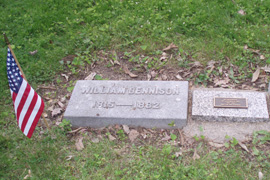
This is the grave of Gov. William N. Dennison, Ohio’s first Civil War-era governor. His son, Lt. William N. Dennison, a talented horse artillerist who served with the Army of the Potomac’s Cavalry Corps, is buried a few feet away.
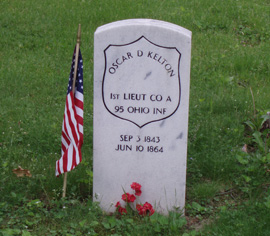
This is the grave of Lt. Oscar Kelton of the 95th Ohio Volunteer Infantry. The Kelton family was prominent in Nineteenth Century Columbus; the family home, which was a stop on the Underground Railroad, is a museum today. Lt. Kelton was KIA during Sherman’s Meridian Campaign in 1864. He was only 21 years old.

This is the grave of Maj. Gen. Irvin McDowell’s father, who was a War of 1812 veteran.
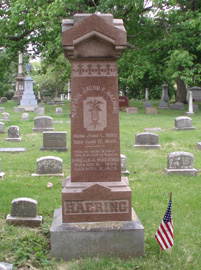
This is the grave of Jacob Haering, a Civil War veteran. I thought it was an extremely interesting monument, which is why I shot it. Note the GAR medal portrayed on the monument.
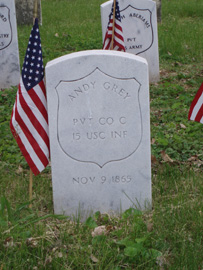
There are two sections of Civil War veterans. One of them includes a number of unknowns, as well as a number of United States Colored Troops, whose graves are interspersed among the the graves of the white soldiers who served alongside them. This is the grave of Pvt. Andy Grey, who served in the 15th U. S. Colored Infantry.
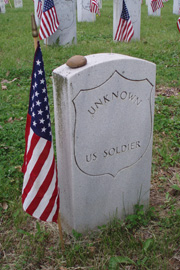
One of a number of unknown Union soldiers buried in the larger section.
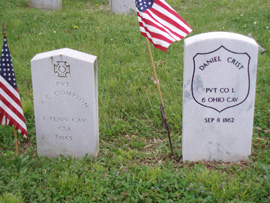
Brothers in arms, if not in service. Private Compton probably died at the Confederate prisoner of war prison site at Camp Chase.
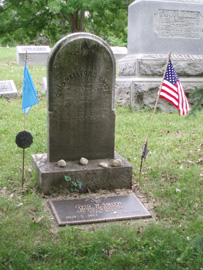
This is the grave of Ovid Wellford Smith, one of the Andrews Raiders, of Great Locomotive Chase fame. Like most of the raiders, Smith was awarded the Medal of Honor for his valor. His grave is the only one in the entire cemetery to have its own state historical marker.
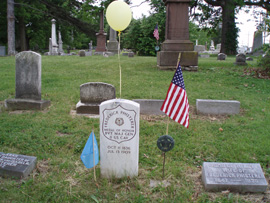
This is the grave of another Medal of Honor winner, Bvt. Maj. Gen. Frederick Phisterer. He was awarded the MOH as a First Lieutenant in the 18th U.S. Infantry for action on December 31, 1862 at Stone River, Tennessee. His citation reads “Voluntarily conveyed, under a heavy fire, information to the comander of a battalion of regular troops by which the battalion was saved from capture or annihilation.”
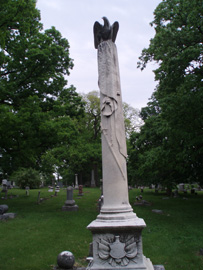
This is the grave marker of a young Union soldier who died of disease at Fortress Monroe in early 1864. The marker depicts a saber, the U.S. flag, an eagle on top, and a detail at the bottom showing a cannon tube, several rifles with bayonets, and several cavalry sabers. It’s without doubt one of the most interesting Civil War grave markers I’ve ever seen. And it belongs to a common soldier, which makes it even more interesting.
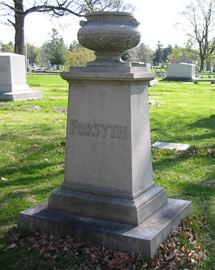
Thanks to Susan Forsyth for passing this one along. This is the grave of Brig. Gen. James William “Tony” Forsyth, Philip H. Sheridan’s chief of staff, who commanded the U. S. troops at the Wounded Knee episode in 1890. Forsyth was married to one of Governor Dennison’s daughters.
To all of our veterans, past, present, and future, thank you for your sacrifices in giving us the country that we enjoy today, and a special thank you to SSgt. Morton L. Wittenberg, 14th Air Force, who served in North Africa and Italy during World War II, and who shuffled off this mortal coil much too soon in December 1980.
Scridb filterA New One on Me
Notice: Use of undefined constant the_post_thumbnail - assumed 'the_post_thumbnail' in /home/netscrib/public_html/civilwarcavalry/wp-content/themes/wittenberg/archive.php on line 65

Today, Susan and I attended an encampment/reenactment of the French and Indian War held about twenty miles from our house. I’d never even heard of reenactments of the French and Indian War previously, so this was a new one on me. We heard about it this morning on the TV news and decided to check it largely because we didn’t have anything planned for the day and it seemed like a good way to kill an hour or two.
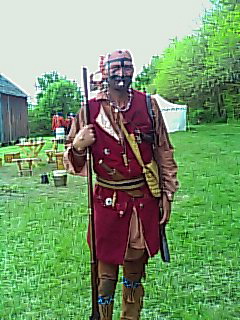 Coincidentally, the event was held at a place called Infirmary Mound Park, named for the pre-historic Indian burial mound located on the property, so I guess it was an appropriate venue for the event. I’m sad to say it wasn’t much of a reenactment. There were nine French soldiers, two Indians, and five or six British soldiers. That doesn’t allow for much in the way of tactical accuracy, so instead, they fired a few volleys, the two Indians looked fierce (see the photo with this post), and the small crowd seemed to eat it up.
Coincidentally, the event was held at a place called Infirmary Mound Park, named for the pre-historic Indian burial mound located on the property, so I guess it was an appropriate venue for the event. I’m sad to say it wasn’t much of a reenactment. There were nine French soldiers, two Indians, and five or six British soldiers. That doesn’t allow for much in the way of tactical accuracy, so instead, they fired a few volleys, the two Indians looked fierce (see the photo with this post), and the small crowd seemed to eat it up.
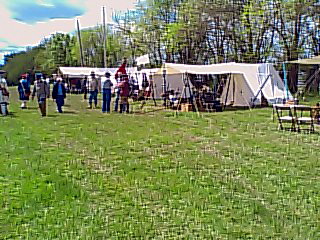 The encampment featured half a dozen or so tents for either side, and not much else, other than some women reenacting period dress and cooking and serving period food over campfires. There was one sutler, selling buck skinning supplies. There were probably forty or so spectators there, in part because they changed the time of the actual reenactment at the last minute due to predictions of bad weather (that never materialized).
The encampment featured half a dozen or so tents for either side, and not much else, other than some women reenacting period dress and cooking and serving period food over campfires. There was one sutler, selling buck skinning supplies. There were probably forty or so spectators there, in part because they changed the time of the actual reenactment at the last minute due to predictions of bad weather (that never materialized).
The reenactors themselves varied in their authenticity. Most of the French soldiers wore glasses, and none of them were period appropriate. Here they are in 1750’s uniforms and modern spectacles. It made them look extremely farby. The two Indians cut pretty intimidating figures; one of them had even pierced the septum of his nose and had run a piece of metal through it. The British soldiers didn’t look too terribly bad, but there were also only six of them, too few to make a difference.
I think it might have been a very interesting event had there been sufficient manpower on both sides. It kind of whet my appetite to see another similar event, only with more men. I likewise think it would be interesting to see a Revolutionary War reenactment, which is something else I have never seen.
Scridb filterElvis Costello & The Impostors/The Police
Notice: Use of undefined constant the_post_thumbnail - assumed 'the_post_thumbnail' in /home/netscrib/public_html/civilwarcavalry/wp-content/themes/wittenberg/archive.php on line 65

To take a break from my Things I Wish I Had Known series of posts, here is a review of last night’s show. Fear not…there will be more Things tomorrow. Today, though, I want to do something completely different. Again, for those who only read this blog for the Civil War content, you will probably want to skip this post.
I’m an old New Waver. I admit it. I loved the New Wave. Some of those bands were truly great: Blondie, The Talking Heads, Joe Jackson, The Romantics, Squeeze, The Fixx, Elvis Costello and the Attractions, The Police, the Specials, Oingo Boingo, UB40, and on and on. I had a one-inch wide black leather tie. I wore black Chuck Taylor high tops. I just really liked the music. It was a lot of the soundtrack to my college years.
Last night, Elvis Costello and his new band, The Impostors, opened for The Police here. We spent a great night last night. I’d never seen Elvis live before, but had always wanted to. He played a rocking hour-long set that never stopped. It was one song leading right into another for the entire hour. He played an interesting mix of his newer material and his old classics from the days when he was an angry young man. His band was terrific–the keyboard player is one of the best I have ever heard, and he’s also got an excellent drummer. They put an interesting twist on his biggest commercial hit, “Allison (My Aim is True)”, turning it into a bluesy tune, and then they turned up the heat. They did “Watching the Detectives,” a special favorite from the old days. He did “Radio, Radio”, a song that was tremendously controversial for its time, but tame by today’s standards. The set concluded by Elvis doing his signature song, “Pump It Up” (a rocking version up the standard of the original) and closed with “What’s So Funny About Peace, Love, and Understanding”. The crowd was on its feet swaying and singing along, and the place was completely energized by the end of his set.
I have to say that it was worth the price of admission just to see Elvis. I’m not sure how I’ve managed not to see him live previously, but if the opportunity presents itself again, I will be sure to see him again, because it was a great set–terrific songs, really excellent musicianship, and lots of energy. He may not be an angry young man any more, but he can still play.
After whipping the crowd into a frenzy, they had to break down Elvis’ stuff, so there was about 20 minute break. It gave me a chance to check out the crowd. As has been the case with all three concerts we’ve been to this spring, there was lots of gray hair in the crowd, but there were also a lot of youngsters. The couple sitting directly behind us brought their son to the show. The boy didn’t look like he was much older than 7 or 8, and he got bored pretty quickly. I like watching crowds at events like this. It’s very entertaining.
The lights went down again, and out came The Police. This was my fifth time seeing them. I saw them in the summer of 1981, before “Ghost in the Machine” was released, and then again in February 1982, on the same tour. Then I saw them a third time in August 1983, in one of those all-day outdoor extravaganzas of rock at old JFK Stadium in Philadelphia. I was 22, had just graduated from college, and was about a week from packing up to move to Pittsburgh to start grad school. It was sort of my last hurrah. As for the band, they were on top of the world at the time, with their album Synchronicity the number one record in the world for most of the year, and they headlined a fabulous show. It was 103 degrees that day, and I’ve never been so dehydrated in my life. At that end of that tour, that was the end of The Police. Sting began his solo career, and I never thought I would see them again.
Fortunately, I was wrong. Susan and I saw them in Cleveland last July early on the first leg of this tour, and then again last night. The set was different last night from what we saw in July, and the band was, if anything, even more tight than the were last summer. We saw an even better band last night.
Sting still sounds great. His unique voice is still as clear as ever, and he’s a tremendous bass player. At 64, Andy Summers is still a virtuoso guitar player, and Stewart Copeland is still a wild man on the drums. The magic is still there. These three are proof of the old cliche about the whole being greater than the sum of the parts. They bring out the best (and the worst) in each other, and it creates magic on stage. Their songs, which are no less than 25 years old at this point, still stand the test of time. It’s remarkable.
I’ve always loved Sting’s lyrics. As he pointed out last night, before he had this job, as he put, he was a schoolteacher. What other rocker makes the literary allusions he makes? References to Humbert Humbert in Lolita, or referring to Scylla and Charybdis from the tale of the Sirens in The Odyssey? Or that a song about a prostitute (“Roxanne”) is actually a veiled reference to Cyrano de Bergerac? His lyrics are often poetry set to music, which has always appealed to the writer in me.
The show began with Sting seated with a mandolin, doing a quiet but powerful version of “Bring On the Night.” That quickly changed, though, and the crowd was soon on its feet, singing along, with the whole list of great songs. They did “Synchronicity II”, “Wrapped Around My Finger”, and “King of Pain” from Synchronicity, “Demolition Man”, “One World”, and “Every Little Thing She Does is Magic” from Ghost in the Machine, “Don’t Stand So Close to Me”, “When the World is Running Down”, “De Do Do Do, De Da Da Da”, and “Voices Inside Your Head” from Zenyatta Mondatta.
The best part of the show was hearing them do a lot of songs from their first two albums: “Message in a Bottle”, “Walking on the Moon”, “Can’t Stand Losing You”, “Next To You”, “Driven to Tears”, “So Lonely”, and, of course, the one that started it all, “Roxanne”, done with a bluesy, jazzy sort of an arrangement. The last encore–they came back out three times–was “Next to You,” a rocking reminder of the energy of the early days of the New Wave. The crowd knew every word to every song, and it sang along with great gusto, swaying and dancing the whole time. We were on our feet for nearly the entire show.
At the end of it all, I was left with a bittersweet feeling. On one hand, I’d been handed a reprieve. I got to see The Police two more times when I never expected to have that opportunity again. For that, I am grateful. At the same time, as the lights came back up, I realized it was over, that this would be the last time that I ever saw these three men make magic together again.
But Sting’s final words echoed in my ears. After he, Stewart and Andy took a bow, he cryptically said, “We’ll see you again” before leaving the stage. What does that mean? Hope springs eternal that they will find their way into the studio and give us one more great album before going their separate ways once more, but who knows. I’m just glad I got to enjoy one last night of magic.
Scridb filterMy CWPT Hat
Notice: Use of undefined constant the_post_thumbnail - assumed 'the_post_thumbnail' in /home/netscrib/public_html/civilwarcavalry/wp-content/themes/wittenberg/archive.php on line 65

Several years ago, I won a new blue baseball cap from the Civil War Preservation Trust. It’s one of my favorite hats; I can be seen wearing it here.
A couple of years ago, I decided to do something special with the hat. I decided to start collecting pins from Civil War battlefields and to display them on the hat. I’ve always liked the pins, but I couldn’t figure out what to do with them. Finally, I stumbled on the idea of wearing them on the hat, and a new tradition was born. It seems like a good way to honor the wonderful preservation work done by the CWPT, particularly since so many battlefields have benefited from the good work being done by the CWPT.
At the moment, I have the following pins on the hat:
1. Gettysburg National Military Park
2. Antietam National Battlefield
3. Monocacy National Battlefield
4. Richmond National Battlefields
5. Petersburg National Battlefields
6. Fredericksburg/Spotsylvania National Military Park
7. Fredericksburg Battlefield
8. Chancellorsville Battlefield
9. Spotsylvania Battlefield
10. Pamplin Park
11. Museum of the Confederacy
12. Bentonville Battleground
13. Averasboro Battlefield (thanks, Wade Sokolosky)
14. United States of America
Michael Aubrecht, who lives in Fredericksburg, has agreed to get me a Wilderness Battlefield pin (they were out last June when I purchased the other Fredericksburg/Spotsylvania pins at the Chancellorsville VC). There are obviously many more that I need; I have none at all from the Western Theater. The fun will be visiting the battlefields to collect the pins.
I’ve started doing the same thing for Revolutionary War battlefields with a hat that I bought at Valley Forge last year. So far, I only have two pins: Valley Forge and Guilford Court House. I have a VERY long way to go with the Revolutionary War pins.
Scridb filterBilly Joel, April 20, 2008
Notice: Use of undefined constant the_post_thumbnail - assumed 'the_post_thumbnail' in /home/netscrib/public_html/civilwarcavalry/wp-content/themes/wittenberg/archive.php on line 65

This is another post that has nothing to do with the Civil War, so for those who only read this blog for historical content, you may want to skip this post.
We saw our second of four old geezer band concerts last night. Billy Joel came to town.
The show last night was fabulous. The old guy is still a consummate entertainer. He joked about his lack of hair and the fact that’s he’s now 58 years old. Given that he has not released a new album of pop music since 1993, his continuing appeal is a testimony to his ongoing popularity. His first album was released in 1971, so he’s been around for nearly 40 years now. Nationwide Arena was sold out–20,000 people on their feet singing and dancing the whole 21 song show.
He opened with “Angry Young Man” from Turnstiles, which has long been one of my favorite songs of his. The second song was 1974’s “The Entertainer” from Streetlife Serenade. He also did “Summer, Highland Falls”, from Turnstiles. There was at least one song from every one of his albums, except for the first one, Cold Spring Harbor.
What particularly impressed me was that instead of using someone else to hit the high notes in “An Innocent Man” like he did the last time we saw him, he hit them himself. And he nailed them. Not bad for an old guy. Not bad at all. He then did “Keeping the Faith”, the final song from 1983’s terrific An Innocent Man album.
He was backed by a very tight and very professional band, featuring the terribly talented Crystal Taliefero on percussion, saxophone, and backing vocals. They did two fun things during the course of the show. He did the gospelly “In the Middle of the Night” from his last pop album, River of Dreams, about mid-set. Midway through the song, the band stopped dead in their tracks for a second, and then the lead guitar player broke into “Hang on Sloopy”, which is one of the Ohio State University sports anthems. The faithful of Buckeye Nation went bonkers. After a chorus of “Sloopy”, the band then shifted right back into “In the Middle of the Night”. Talk about pandering to the crowd.
And then, Billy brought out his guitar tech, nicknamed Chainsaw. Billy announced that Chainsaw was going to do lead vocals on the next song, which was a religious song appropriate for a Sunday night. That religious song was AC/DC’s “Highway to Hell”, with Billy on lead guitar. Too funny.
Of the 21 songs played (counting “Highway to Hell”), five of them came from 1977’s The Stranger: the sappy “Just the Way You Are”, which is still his biggest selling single, “Anthony’s Song (Moving Out)”, “Scenes from an Italian Restaurant” (always a favorite of mine), “She’s Always a Woman to Me”, and, of course, the crowd favorite, “Only the Good Die Young”. “Scenes” and “Only the Good Die Young” were encores. He performed over half the album. He didn’t do more than two songs from any other album, so I guess that says a lot about The Stranger. The night’s final song was his legendary signature song, “Piano Man”, from the classic 1973 album of the same name. With Billy on piano and harmonica, he let the crowd sing the final chorus–it’s always an amazing thing to hear 20,000 people singing in unison, and he was obviously loving it.
One of the evening’s more interesting numbers was “Zanzibar”, from 52nd Street. It’s an experimental jazz fusion piece, and he did some very cool trading of riffs with one of his horn players, who switched from flugelhorn to trumpet mid-song and played them both extremely well. Nifty stuff that shows off Billy’s still keen piano skills.
There was only one song that he didn’t do that I wanted to hear. Although he did “Allentown” from 1982’s The Nylon Curtain, I hoped he would also do “Goodnight, Saigon,” his wonderful tribute to Vietnam War vets. When we saw him last time, he not only did that song, he brought out a group of actual Vietnam vets to sing the chorus, “And we all went down together,” with him. I’ve long believed that he got “Goodnight Saigon” right, that it is the last musical word on its subject, and that, as a consequence, it’s one of my favorite and most moving songs of all time. Sadly, he didn’t do it this time. I wonder if that isn’t a result of the current war in Iraq.
As he left the stage for the last time, he made a comment that sums him up nicely. “Don’t take no shit from nobody,” he called out. What more needed to be said?
It was a great evening with a consummate showman and a great entertainer. Next up, Elvis Costello and the Impostors warming up for The Police on May 4.
Scridb filterA Cool Discovery
Notice: Use of undefined constant the_post_thumbnail - assumed 'the_post_thumbnail' in /home/netscrib/public_html/civilwarcavalry/wp-content/themes/wittenberg/archive.php on line 65

I live in Columbus, Ohio. Columbus is the county seat of Franklin County, named for Ben Franklin. Many of Ohio’s 88 counties are named for Founding Fathers or for heroes of the Revolutionary War. Only a handful are not. The county immediately to the east of Franklin County is called Licking County, named for the Licking River, which meanders through the county. Recently, I’ve had a number of cases in Licking County, so I’ve been traveling to Newark, Ohio, which is the county seat with some degree of regularity.
I had a court appearance in Newark yesterday, and I took a different route than the one I normally take. When I reached the lovely college town of Granville (home of Denison University), I headed east on State Route 16, and, as I reached a golf course with the interesting name of Raccoon International, I spotted a new-looking state historical marker just beyond the entrance to the golf course. As I got closer, I could see that the marker was to Maj. Gen. Charles Griffin, the final commander of the Army of the Potomac’s 5th Corps (pictured here).
 I was running late for my hearing, so I didn’t have time to stop. When I got home, I did a little digging was surprised to learn that Griffin had been born and spent most of his childhood in Granville, and that the handsome white farmhouse where the marker stands was his childhood home. This was a new one on me; I had not realized that Griffin was a Buckeye prior to yesterday. Griffin was a member of the West Point Class of 1847 and spent his entire military career in the Regular Army in the years prior to the war, including teaching artillery tactics at West Point. He was promoted from captain commanding a Regular battery to brigadier general of volunteers and assumed command of a brigade of infantry, meaning that he never served with a regiment of volunteer infantry.
I was running late for my hearing, so I didn’t have time to stop. When I got home, I did a little digging was surprised to learn that Griffin had been born and spent most of his childhood in Granville, and that the handsome white farmhouse where the marker stands was his childhood home. This was a new one on me; I had not realized that Griffin was a Buckeye prior to yesterday. Griffin was a member of the West Point Class of 1847 and spent his entire military career in the Regular Army in the years prior to the war, including teaching artillery tactics at West Point. He was promoted from captain commanding a Regular battery to brigadier general of volunteers and assumed command of a brigade of infantry, meaning that he never served with a regiment of volunteer infantry.
The house still stands, and is in good repair. There’s quite a bit of text on the marker, so next time I have a court appearance in Newark, I’m going to have to time the trip so that I have time to stop and at least read the marker, and, hopefully, get a photo of it.
It was a cool discovery to make, and adds yet another important Union general to the list of the Buckeye State’s contributions to the Northern victory in the Civil War.
Scridb filterThe Weekend’s Adventures
Notice: Use of undefined constant the_post_thumbnail - assumed 'the_post_thumbnail' in /home/netscrib/public_html/civilwarcavalry/wp-content/themes/wittenberg/archive.php on line 65

I thought I would provide an after-action report of the weekend’s adventures. I drove to Chambersburg on Wednesday, as the program began early on Thursday morning. I got there in time to have dinner with Al Ovies to celebrate my birthday. We made the mistake of going to a TGI Fridays for a bad meal, but it was good getting caught up with Al. Al’s a chef in Miami, and his hours at work don’t permit him to come out to play very often.
Thursday morning, Ted Alexander and I had a busload of about 26 people covering George Armstrong Custer during the retreat from Gettysburg. We covered Monterey Pass, Smithsburg, Hagerstown (the July 6 fight), Hagerstown (the July 12 fight), the fight at the Donnelly house on the Falling Waters Road, and finished up at the Cushwa Basin on the C & O Canal in Williamsport. I’d never seen the site where the July 12 fight took place, so that was interesting and fun. And then we had lots of fun by the Donnelly house. We had several folks with us who live on the Falling Waters Road, and one said, “Go ahead and pull in here. They’re my cousins. They won’t mind.” Wrong. The woman blew a gasket. It took lots of sweet talking to get her calmed down. So much for that.
That night, Al and I went to dinner, and then I had to do a talk on Custer in the Valley in 1864. I woke up with almost no voice on Thursday, so it was a struggle. I dragged poor Al up and made him do part of the talk, just to conserve my voice.
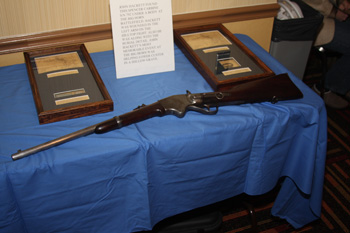 On Friday, I spent the day leading tours with Ed Bearss. Our first stop was near Frederick, where Farnsworth and Custer first took command of their brigades. From there, it was on to Littlestown, Hanover, Hunterstown, and the afternoon was spent on East Cavalry Field. I was perfectly content to led Ed do most of the talking, as my voice was still very craggy, and I was in charge the next day. That night, Ed did a good talk on the Little Big Horn fight, and then we had a presentation by Steve Alexander, who does a first person portrayal of George Armstrong Custer.
On Friday, I spent the day leading tours with Ed Bearss. Our first stop was near Frederick, where Farnsworth and Custer first took command of their brigades. From there, it was on to Littlestown, Hanover, Hunterstown, and the afternoon was spent on East Cavalry Field. I was perfectly content to led Ed do most of the talking, as my voice was still very craggy, and I was in charge the next day. That night, Ed did a good talk on the Little Big Horn fight, and then we had a presentation by Steve Alexander, who does a first person portrayal of George Armstrong Custer.
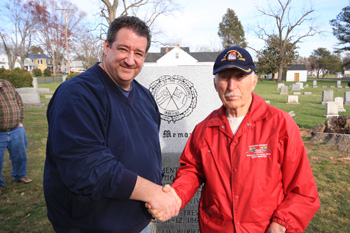 Saturday was a LONG day. We left the hotel at 7:00 AM. It’s a bit more than three hours from Chambersburg to Trevilian Station. Ed and I decided that we had time to give the crowd a bonus battlefield, so we stopped and covered the October 9, 1864 Battle of Tom’s Brook. Most of the crowd–about 46–had never been to Tom’s Brook previously, and they really seemed to enjoy it. The Custer sector of the battlefield is nearly pristine, and I always like to show folks that beautiful field.
Saturday was a LONG day. We left the hotel at 7:00 AM. It’s a bit more than three hours from Chambersburg to Trevilian Station. Ed and I decided that we had time to give the crowd a bonus battlefield, so we stopped and covered the October 9, 1864 Battle of Tom’s Brook. Most of the crowd–about 46–had never been to Tom’s Brook previously, and they really seemed to enjoy it. The Custer sector of the battlefield is nearly pristine, and I always like to show folks that beautiful field.
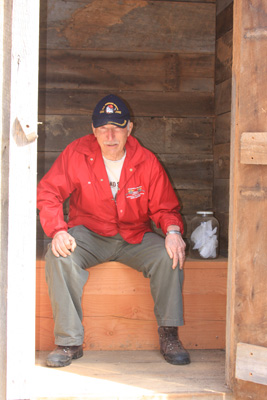 We went on to Trevilian Station, and we had a tour that took a bit more than 5 hours. The highlight of the tour was when Ed discovered the working outhouse at the reproduction of the Netherland Tavern. The photo says all that needs to be said. We finished the tour, had dinner at a nice little Italian place in Louisa, and then headed on back to the hotel. We got back at 10:30, 15.5 hours after leaving.
We went on to Trevilian Station, and we had a tour that took a bit more than 5 hours. The highlight of the tour was when Ed discovered the working outhouse at the reproduction of the Netherland Tavern. The photo says all that needs to be said. We finished the tour, had dinner at a nice little Italian place in Louisa, and then headed on back to the hotel. We got back at 10:30, 15.5 hours after leaving.
Sunday morning featured lectures by Greg Urwin and Jeff Wert, and a couple of panel discussions. I then headed for home. It was a great weekend, but it was exhausting, and I’m still beat today. But it was fun.
Scridb filterThe Magic Tour
Notice: Use of undefined constant the_post_thumbnail - assumed 'the_post_thumbnail' in /home/netscrib/public_html/civilwarcavalry/wp-content/themes/wittenberg/archive.php on line 65

For those of you who read this blog only for the Civil War content, you will probably want to skip this post, as it has absolutely nothing to do with the Civil War.
I grew up in the Philadelphia suburbs in the 1970’s, so I guess it was inevitable that I would become a fan of Bruce Springsteen and his legendary E Street Band. Perhaps it was the poetry of his lyrics. “I found the key to the universe in the engine of an old parked car,” he proclaimed in his anthem of youth, “Growing Up”. As a teenager, that particular line REALLY resonated with me.
Perhaps it was the gritty character studies that he painted:
The screen door slams
Mary’s dress waves
Like a vision she dances across the porch
As the radio plays
Roy Orbison singing for the lonely
Hey that’s me and I want you only
Don’t turn me home again
I just can’t face myself alone again
Don’t run back inside
darling you know just what I’m here for
So you’re scared and you’re thinking
That maybe we ain’t that young anymore
Show a little faith, there’s magic in the night
You ain’t a beauty, but hey you’re alright
Oh and that’s alright with me
, as he sang in 1975’s “Thunder Road”. Perhaps it was his political rantings. Maybe it was the raucous and unique Jersey sound, featuring Clarence Clemens and his honking saxophone and Roy Bittan’s bombastic piano riffs. I don’t know what it was, but there was just something about this blue collar Italian guy from New Jersey that resonated with me–the middle class Jewish kid from the suburbs–the first time I ever heard “Born to Run” in 1975. Philadelphia, being the blue collar town that it is, proudly embraced Bruce as one of its own.
I saw my first Springsteen concert in 1978, and if there was any doubt before that, that show took care of that. I was hooked forever. Back in those days, his shows were 4 1/2 hour marathons of sheer frenetic energy and the pure, unbridled joy of rock and roll. It was easy to understand why Jon Landau said of him, “I saw the future of rock and roll and its name is Bruce Springsteen. And on a night when I needed to feel young, he made me feel like I was hearing music for the very first time.” Clarence and his magical sax, Bruce and his Fender Stratocaster, Steve Van Zandt and his mandolin, and if there’s a better drummer anywhere in the world than the Mighty Max Weinberg, I don’t know who that is.
Bruce eventually permitted his politics to come into play, and by 1984, he was a passionate advocate for liberal causes. In December 1980, my sophomore year in college, he hit the road after releasing my favorite of his albums, The River. I saw him on December 8, 1980, in another of those four-plus hour marathons, with his joyous version of “Santa Claus is Coming to Town” as one of the highlights of the show. When we got to the car to drive back to school, we learned that John Lennon had been shot and killed that night, and the joy drained out of us.
After that came Nebraska, a stark, dark, depressing solo album that sood in contrast to the honking joyousness of Born to Run. In 1984 came Born in the USA. Bruce hit the road for a world tour that spanned the globe twice. I saw him twice on that tour, about six weeks apart. In 1988, I saw the band in Cleveland on the Tunnel of Love tour, and that was it for the E Street Band for ten long years. When the band reunited in 1999, we saw them in Cleveland, and we saw them again when they toured in support of The Rising.
Last night, I attended my ninth concert by Bruce and the E Street Band. Gone are the marathons that featured long, rambling stories by Bruce. Gone are the long political rants–there was only one last night, and it was short, introducing “Living in the Future”, one of my favorite songs from Magic. The flickering Bic lighters have been replaced by the eerie glow of thousands of cell phones. The show was 2.5 tight, compact hours featuring 25 taut songs by a band that has never sounded better. The band came out and ripped right into “The Ties that Bind” from The River and didn’t stop rocking. Bruce is nearly 60 now, but he looks and sounds great. Clarence Clemens is frail and unhealthy. There’s a chair on stage for him and he needed help leaving the stage. The rest of the band is still as amazing as ever, although organist Dan Federici is not touring due to being treated for cancer.
The virtuosity of Nils Lofgren’s guitar skills never ceases to amaze me, and they were on full display last night. Nils is a great player in his own right, and he has been a front man with his own band. It amazes me that he’s been willing to be a secondary player all these years. Susan says she believes it’s a case of the whole being greater than the sum of the parts, and I think she’s right.
The choices of songs were fascinating. He eschewed his greatest commercial hits–“Hungry Heart” from The River, “Dancing in the Dark” from Born in the USA (the song that first introduced us to Courteney Cox), and, of course, the anthemic “Born in the USA”. I guess he’s sick of those songs. Instead, he played “Incident on 57th Street” and “Rosalita” from The Wild, the Innocent, and the E Street Shuffle, his second album. “Rosalita” was my fraternity’s theme song, so it’s always had a special meaning for me, and it was a joyous, raucous version that had 20,000 on their feet dancing and singing along. They did “Reason to Believe” from Nebraska, a stark and dark song when done solo, but presented last night as a gospel hymn in an interpretation that I had never heard before. He did “Because the Night”, a song he’s never recorded and which he wrote for Patti Smith. He did only one song from Born in the USA, “Glory Days”, which was an encore. To my surprise, they did “She’s the One” from Born to Run and “Adam Raised a Cain” from Darkness on the Edge of Town. He did several from The River, including “Sherry Darling” (which still makes me laugh every time I hear it, all these years later), and he did two from The Rising. Two of the very best from Darkness on the Edge of Town–“Promised Land” and “Badlands”–had the crowd on its feet and singing along.
Notably absent was the great anthem, “Jungleland”, from Born to Run, which spotlights Clarence’s most famous sax solo. The truth is that Clarence just doesn’t look up to it any more, which is sad. Instead, a new song was debuted. It’s called “American Land” and comes from his time working with The Seeger Sessions band. It’s a gleeful Irish jig, featuring Suzie Tyrell’s violin and spirited accordion playing by Roy Bittan and Charles Giordano, who is filling in for Dan Federici on this tour. It was great fun and a fitting conclusion to a night of temporarily recapturing my fleeting youth. I will be 47 years old tomorrow, and it was a joy to celebrate my birthday with the music that has meant so much to my life.
Once again, I come away convinced of the healing power and sheer joy of rock and roll. My life is more complete for it.
Scridb filterThe History (?) Channel, Part 2
Notice: Use of undefined constant the_post_thumbnail - assumed 'the_post_thumbnail' in /home/netscrib/public_html/civilwarcavalry/wp-content/themes/wittenberg/archive.php on line 65

This will follow up on my post of last week, where I complained about The History Channel. The following appeared on MSNBC today. It’s nice to see that I’m not the only one who feels the same way about this particular issue.
NEW YORK – The History Channel is now history.
Make that History. The cable network quietly dropped “the” and “channel” from its name recently, claiming History for itself.
“Our brand is, in the media landscape, synonymous with the genre of history so I don’t think it’s presumptuous of us to call ourselves History,” said Nancy Dubuc, the network’s executive vice president.
That’s how many viewers already refer to it, she said. “Channel” is a drag on efforts to establish the brand in other media, like on the Internet. There were no licensing issues involved in the switch, she said.
The network has even changed its “H” logo to make it look bolder, less ancient.
Once dubbed “The Hitler Channel” for all of its World War II documentaries, History has switched to a more “immersive” style that tries to show rather than tell, she said. Adventure-seeking is in. Sitting in an armchair telling war stories is out.
History is following the model of Discovery, whose popular “Deadliest Catch” series about Alaskan crab fishermen is one of the most influential shows on cable. History, owned by the A&E Television Networks, has its own “Ice Road Truckers” about drivers on frozen lakes in Canada and just started “Ax Men” about loggers.
The series “MonsterQuest” may sound like a video game; it’s about searches for mythic creatures.
“It’s not exactly history, is it?” said Sean Wilentz, award-winning history professor at Princeton University.
“Anybody who thinks that there’s only one place to go for history is badly mistaken,” Wilentz said. “Why are they doing that? I don’t know. Especially at a time they are moving away from history? I don’t get it.”
Although the attention-getting “Life After People” special dramatized a world after the human race had been wiped out — prehistory, in other words — Dubuc said she’s concentrating on building signature series that people will return to each week.
Despite his bewilderment at the change, Wilentz and another prominent historian said they appreciated any efforts to get more people interested in the topic.
“Truth is that I love history so much and if the changed name brings more people to watch more history it’s all to the good,” said Doris Kearns Goodwin.
Gordon Wood, a Pulitzer Prize-winning historian at Brown University, doesn’t watch the network much.
“I must confess, I’m still back in the reading-of-books stage,” he said
© 2008 The Associated Press. All rights reserved. This material may not be published, broadcast, rewritten or redistributed.
It may be interesting, but it’s NOT history.
Scridb filterNotice: Undefined index: id in /home/netscrib/public_html/civilwarcavalry/wp-content/themes/wittenberg/footer.php on line 8
Notice: Undefined index: id in /home/netscrib/public_html/civilwarcavalry/wp-content/themes/wittenberg/footer.php on line 8
Notice: Undefined index: std in /home/netscrib/public_html/civilwarcavalry/wp-content/themes/wittenberg/footer.php on line 8
Notice: Undefined index: id in /home/netscrib/public_html/civilwarcavalry/wp-content/themes/wittenberg/footer.php on line 8
Notice: Undefined index: id in /home/netscrib/public_html/civilwarcavalry/wp-content/themes/wittenberg/footer.php on line 8
Notice: Undefined index: std in /home/netscrib/public_html/civilwarcavalry/wp-content/themes/wittenberg/footer.php on line 8
Notice: Undefined index: id in /home/netscrib/public_html/civilwarcavalry/wp-content/themes/wittenberg/footer.php on line 8
Notice: Undefined index: id in /home/netscrib/public_html/civilwarcavalry/wp-content/themes/wittenberg/footer.php on line 8
Notice: Undefined index: std in /home/netscrib/public_html/civilwarcavalry/wp-content/themes/wittenberg/footer.php on line 8
Notice: Undefined index: id in /home/netscrib/public_html/civilwarcavalry/wp-content/themes/wittenberg/footer.php on line 8
Notice: Undefined index: id in /home/netscrib/public_html/civilwarcavalry/wp-content/themes/wittenberg/footer.php on line 8
Notice: Undefined index: std in /home/netscrib/public_html/civilwarcavalry/wp-content/themes/wittenberg/footer.php on line 8
Notice: Undefined index: id in /home/netscrib/public_html/civilwarcavalry/wp-content/themes/wittenberg/footer.php on line 8
Notice: Undefined index: id in /home/netscrib/public_html/civilwarcavalry/wp-content/themes/wittenberg/footer.php on line 8
Notice: Undefined index: std in /home/netscrib/public_html/civilwarcavalry/wp-content/themes/wittenberg/footer.php on line 8
Notice: Undefined index: id in /home/netscrib/public_html/civilwarcavalry/wp-content/themes/wittenberg/footer.php on line 8
Notice: Undefined index: id in /home/netscrib/public_html/civilwarcavalry/wp-content/themes/wittenberg/footer.php on line 8
Notice: Undefined index: std in /home/netscrib/public_html/civilwarcavalry/wp-content/themes/wittenberg/footer.php on line 8
Notice: Undefined index: id in /home/netscrib/public_html/civilwarcavalry/wp-content/themes/wittenberg/footer.php on line 8
Notice: Undefined index: id in /home/netscrib/public_html/civilwarcavalry/wp-content/themes/wittenberg/footer.php on line 8
Notice: Undefined index: std in /home/netscrib/public_html/civilwarcavalry/wp-content/themes/wittenberg/footer.php on line 8
Notice: Undefined index: id in /home/netscrib/public_html/civilwarcavalry/wp-content/themes/wittenberg/footer.php on line 8
Notice: Undefined index: id in /home/netscrib/public_html/civilwarcavalry/wp-content/themes/wittenberg/footer.php on line 8
Notice: Undefined index: std in /home/netscrib/public_html/civilwarcavalry/wp-content/themes/wittenberg/footer.php on line 8
Notice: Undefined index: id in /home/netscrib/public_html/civilwarcavalry/wp-content/themes/wittenberg/footer.php on line 8
Notice: Undefined index: id in /home/netscrib/public_html/civilwarcavalry/wp-content/themes/wittenberg/footer.php on line 8
Notice: Undefined index: std in /home/netscrib/public_html/civilwarcavalry/wp-content/themes/wittenberg/footer.php on line 8
Notice: Undefined index: id in /home/netscrib/public_html/civilwarcavalry/wp-content/themes/wittenberg/footer.php on line 8
Notice: Undefined index: id in /home/netscrib/public_html/civilwarcavalry/wp-content/themes/wittenberg/footer.php on line 8
Notice: Undefined index: std in /home/netscrib/public_html/civilwarcavalry/wp-content/themes/wittenberg/footer.php on line 8
Notice: Undefined index: id in /home/netscrib/public_html/civilwarcavalry/wp-content/themes/wittenberg/footer.php on line 8
Notice: Undefined index: id in /home/netscrib/public_html/civilwarcavalry/wp-content/themes/wittenberg/footer.php on line 8
Notice: Undefined index: std in /home/netscrib/public_html/civilwarcavalry/wp-content/themes/wittenberg/footer.php on line 8
Notice: Undefined index: id in /home/netscrib/public_html/civilwarcavalry/wp-content/themes/wittenberg/footer.php on line 8
Notice: Undefined index: id in /home/netscrib/public_html/civilwarcavalry/wp-content/themes/wittenberg/footer.php on line 8
Notice: Undefined index: std in /home/netscrib/public_html/civilwarcavalry/wp-content/themes/wittenberg/footer.php on line 8
Notice: Undefined index: id in /home/netscrib/public_html/civilwarcavalry/wp-content/themes/wittenberg/footer.php on line 8
Notice: Undefined index: id in /home/netscrib/public_html/civilwarcavalry/wp-content/themes/wittenberg/footer.php on line 8
Notice: Undefined index: std in /home/netscrib/public_html/civilwarcavalry/wp-content/themes/wittenberg/footer.php on line 8
Notice: Undefined index: id in /home/netscrib/public_html/civilwarcavalry/wp-content/themes/wittenberg/footer.php on line 8
Notice: Undefined index: id in /home/netscrib/public_html/civilwarcavalry/wp-content/themes/wittenberg/footer.php on line 8
Notice: Undefined index: std in /home/netscrib/public_html/civilwarcavalry/wp-content/themes/wittenberg/footer.php on line 8
Notice: Undefined index: id in /home/netscrib/public_html/civilwarcavalry/wp-content/themes/wittenberg/footer.php on line 8
Notice: Undefined index: id in /home/netscrib/public_html/civilwarcavalry/wp-content/themes/wittenberg/footer.php on line 8
Notice: Undefined index: std in /home/netscrib/public_html/civilwarcavalry/wp-content/themes/wittenberg/footer.php on line 8
Notice: Undefined index: id in /home/netscrib/public_html/civilwarcavalry/wp-content/themes/wittenberg/footer.php on line 8
Notice: Undefined index: id in /home/netscrib/public_html/civilwarcavalry/wp-content/themes/wittenberg/footer.php on line 8
Notice: Undefined index: std in /home/netscrib/public_html/civilwarcavalry/wp-content/themes/wittenberg/footer.php on line 8
Notice: Undefined index: id in /home/netscrib/public_html/civilwarcavalry/wp-content/themes/wittenberg/footer.php on line 8
Notice: Undefined index: id in /home/netscrib/public_html/civilwarcavalry/wp-content/themes/wittenberg/footer.php on line 8
Notice: Undefined index: std in /home/netscrib/public_html/civilwarcavalry/wp-content/themes/wittenberg/footer.php on line 8
Notice: Undefined index: id in /home/netscrib/public_html/civilwarcavalry/wp-content/themes/wittenberg/footer.php on line 8
Notice: Undefined index: id in /home/netscrib/public_html/civilwarcavalry/wp-content/themes/wittenberg/footer.php on line 8
Notice: Undefined index: std in /home/netscrib/public_html/civilwarcavalry/wp-content/themes/wittenberg/footer.php on line 8
Notice: Undefined index: id in /home/netscrib/public_html/civilwarcavalry/wp-content/themes/wittenberg/footer.php on line 8
Notice: Undefined index: id in /home/netscrib/public_html/civilwarcavalry/wp-content/themes/wittenberg/footer.php on line 8
Notice: Undefined index: std in /home/netscrib/public_html/civilwarcavalry/wp-content/themes/wittenberg/footer.php on line 8
Notice: Undefined index: id in /home/netscrib/public_html/civilwarcavalry/wp-content/themes/wittenberg/footer.php on line 8
Notice: Undefined index: id in /home/netscrib/public_html/civilwarcavalry/wp-content/themes/wittenberg/footer.php on line 8
Notice: Undefined index: std in /home/netscrib/public_html/civilwarcavalry/wp-content/themes/wittenberg/footer.php on line 8
Notice: Undefined index: id in /home/netscrib/public_html/civilwarcavalry/wp-content/themes/wittenberg/footer.php on line 8
Notice: Undefined index: id in /home/netscrib/public_html/civilwarcavalry/wp-content/themes/wittenberg/footer.php on line 8
Notice: Undefined index: std in /home/netscrib/public_html/civilwarcavalry/wp-content/themes/wittenberg/footer.php on line 8
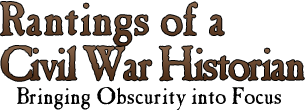


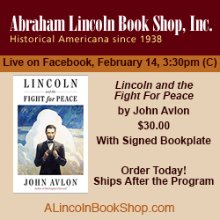
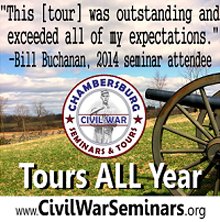


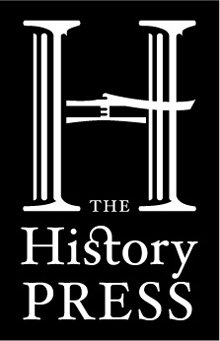
 Back to top
Back to top Blogs I like
Blogs I like 